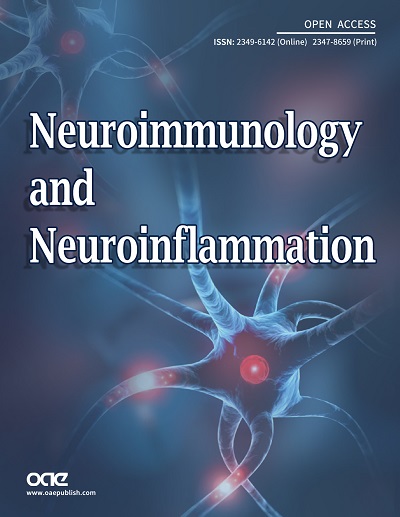REFERENCES
1. Behrman AL, Harkema SD. Physical rehabilitation as an agent for recovery following spinal cord injury. Phys Med Rehabil Clin N Am 2007;18:183-202.
2. Sherwood AM, Dimitrijevic MR, McKay WB. Evidence of subclinical brain influence in clinically complete spinal cord injury: discomplete SCI. J Neurol Sci 1992;110:90-8.
3. Gill ML, Grahn PJ, Calvert JS, Linde MB, Lavrov IA, et al. Neuromodulation of lumbosacral spinal networks enables independent stepping after complete paraplegia. Nat Med 2018;24:1677-82.
6. Mayr W, Krenn M, Dimitrijevic MR. Motor control of human spinal cord disconnected from the brain and under external movement. Adv Exp Med Biol 2016;957:159-71.
7. Taccola G, Sayenko D, Gad P, Gerasimenko Y, Edgerton VR. And yet it moves: recovery of volitional control after spinal cord injury. Prog Neurobiol 2018;160:64-81.
8. Minassian K, Hofstoetter US. Spinal cord stimulation and augmentative control strategies for leg movement after spinal paralysis in humans. CNS Neurosci Ther 2016;22:262-70.
9. Harkema SJ. Neural plasticity after human spinal cord injury: application of locomotor training to the rehabilitation of walking. Neuroscientist 2001;7:455-68.
10. Behrman AL, Harkema SD. Physical rehabilitation as an agent for recovery following spinal cord injury. Phys Med Rehabil Clin N Am 2007;18:183-202.
11. McDonald JW, Becker D, Sadowsky CL, Jane JA Sr, Conturo TE, et al. Late recovery following spinal cord injury. Case report and review of the literature. J Neurosurg 2002;97:252-65.
12. Dimitrijevic MR, Dimitrijevic MM, Faganel J, Sherwood AM. Suprasegmentally induced motor unit activity in paralyzed muscles of patients with established spinal cord injury. Ann Neurol 1984;16:216-21.
13. Sherwood AM, McKay WB, Dimitrijevic MR. Motor control after spinal cord injury: assessment using surface EMG. Muscle Nerve 1996;19:966-79.
14. Sherwood AM, Dimitrijevic MR, Bacia T, McKay WB. Characteristics of the vibratory reflex in humans with reduced suprasegmental influence due to spinal cord injury. Restor Neurol Neurosci 1993;5:119-29.
15. Cioni B, Dimitrijevic MR, McKay WB, Sherwood AM. Voluntary supraspinal suppression of spinal reflex activity in paralyzed muscles of spinal cord injury patients. Exp Neurol 1986;93:574-83.
16. Kakulas A. The applied neurobiology of human spinal cord injury: a review. Paraplegia 1988;26:371-9.
17. Galea MP, Dunlop SA, Geraghty T, Davis GM, Nunn A, et al. SCIPA full-on: a randomized controlled trial comparing intensive whole-body exercise and upper body exercise after spinal cord injury. Neurorehab Neural Re 2018;32:557-67.
18. Kirshblum SC, Burns SP, Biering-Sorensen F, Donovan W, Graves DE, et al. International standards for neurological classification of spinal cord injury (revised 2011). J Spinal Cord Med 2011;34:535-46.
19. Betz R, Biering-Sørensen F, Burns SP, Donovan W, Graves DE, et al. The 2019 revision of the International Standards for Neurological Classification of Spinal Cord Injury (ISNCSCI) - What’s new? Spinal Cord 2019;57:815-7.
20. Lee DC, Lim HK, McKay WB, Priebe MM, Holmes SA, et al. Toward an objective interpretation of surface EMG patterns: a voluntary response index (VRI). J Electromyogr Kinesiol 2004;14:379-88.
21. Zoghi M, Galea M, Morgan D. A Brain Motor Control Assessment (BMCA) protocol for upper limb function. PLoS One 2013;8:e79483.
22. Galea MP, Dunlop SA, Davis GM, Nunn A, Geraghty T, et al. Intensive exercise program after spinal cord injury (“Full-On”): study protocol for a randomized controlled trial. Trials 2013;14:291.
23. Black J, Baharestani M, Cuddigan J, Dorner B, Edsberg L, et al. National Pressure Ulcer Advisory Panel’s updated pressure ulcer staging system. Dermatol Nurs 2007;19:343-9.
24. Harkema S, Behrman A, Barbeau H. Locomotor training: principles and practice. New York: Oxford University Press; 2011.
25. McKay WB, Lim HK, Priebe MM, Stokic DS, Sherwood AM. Clinical neurophysiological assessment of residual motor control in post-spinal cord injury paralysis. Neurorehabil Neural Repair 2004;18:144-53.
27. Dimitrijevic MR, Spencer WA, Trontelj JV, Dimitrijevic M. Reflex effects of vibration in patients with spinal cord lesions. Neurology 1977;27:1078-86.
28. Gillies JD, Burke DJ, Lance JW. Tonic vibration reflex in the cat. J Neurophysiol 1971;34:252-62.
29. Cote MP, Murray M, Lemay MA. Rehabilitation strategies after spinal cord injury: inquiry into the mechanisms of success and failure. J Neurotrauma 2017;34:1841-57.
31. Dimitrijević MR, Nathan PW. Studies of Spasticity in Man. 1. Some features of spasticity. Brain 1967;90:1-30.
32. Kern H, McKay WB, Dimitrijevic MM, Dimitrijevic MR. Motor control in the human spinal cord and the repair of cord function. Curr Pharm Des 2005;11:1429-39.
33. Dobkin BH. Do electrically stimulated sensory inputs and movements lead to long-term plasticity and rehabilitation gains? Curr Opin Neurol 2003;16:685-91.





